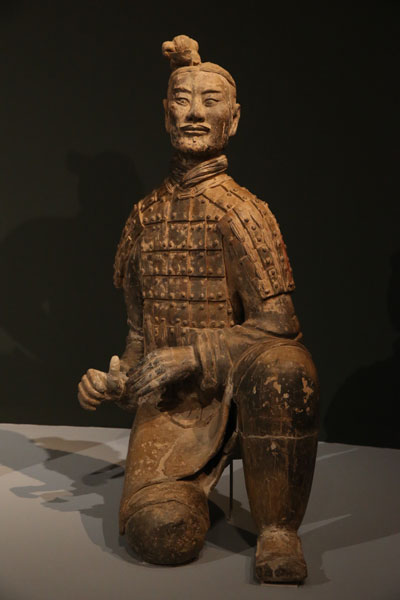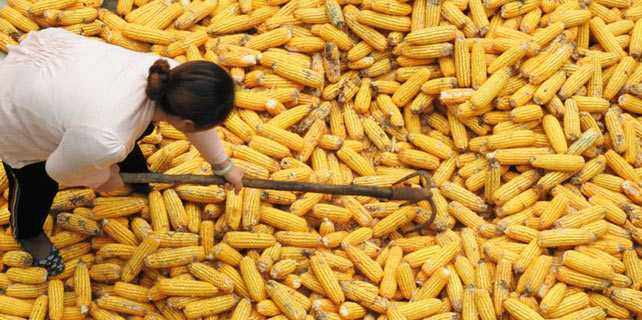A tale of two dynasties
The ongoing Beijing show provides more in-depth information to Chinese visitors, who've read a lot of history in textbooks, she says.
"It tells modern Chinese exactly how the Qin and Han (206 BC-AD 220) empires exceeded other cultures of their times and of their lasting influences on China and the world," she says.
Some objects, therefore, may not be visually stunning but are of historical significance, she explains.
A noted example is an inconspicuous paper map that dates from between 179 BC and 157 BC. Its inky lines depict mountains, rivers and roads.
It was uncovered from a Western Han Dynasty (206 BC-AD 24) tomb in Tianshui, Gansu province, and is part of the Gansu Bamboo and Wooden Slips Museum's collection. It's said to be the earliest specimen of paper with writing.
Eastern Han Dynasty (25-220) court official Cai Lun is traditionally credited with advancing papermaking technology. The map, therefore, helps people understand the invention and development of paper.
Also on show are official seals that testify to the formation of imperial authority and bureaucratic systems that continued in Chinese imperial courts for 2,000 years.
A highlighted jade seal is believed to have been used by Lyu Zhi, the empress consort of Han Dynasty founder Liu Bang.










